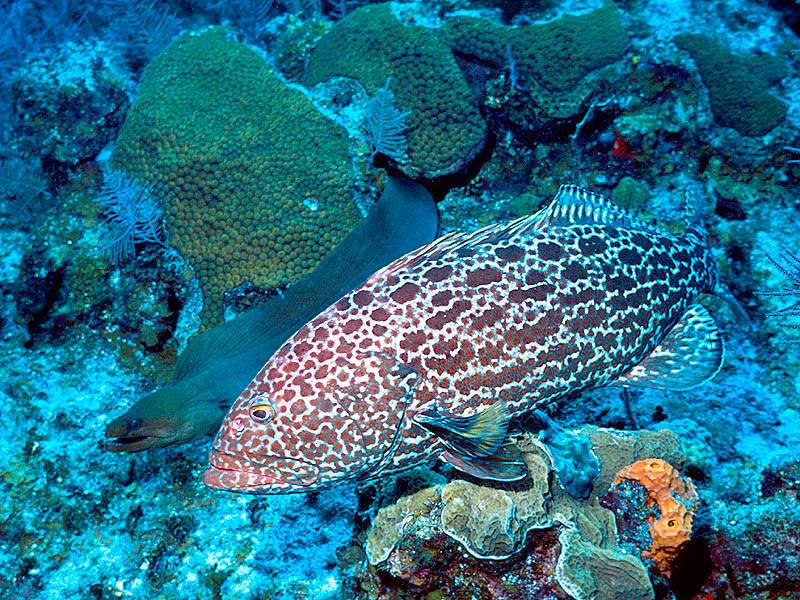Cooperative Hunting Behavior of Moray Eels and Groupers
Biology 342 Fall 2015
Clara Herrera & Hye Min Park
Giant Moray Eel and Grouper CoorperativeHunting
Giant morays ( Gymnothorax javanicus) and groupers have been observed to participate in mutually beneficial joint hunts
Observations in the Red Sea:
Researches in the Red Sea have observed consistent cooperation between giant moray eels and groupers (Bshary et al. 2006). This unlikely interspecific hunting behavior allows us to ask questions about the motivations and benefits for cooperation between two species since it excludes kinship theory as an explanation and emphasizes the benefit of the individual over its genes. We will use this website to describe the cooperative hunting behavior between groupers and giant moray eels using Tinbergen’s four questions of animal behavior.

Figure 1. Grouper and giant moray eel cooperative hunting Photograph by Jonathan Dowell
This cooperative behavior is one of the few cases of interspecific mutualistic hunting in fish. For cooperative hunting to occur, at least two individuals must participate in a hunt and show greater success in capturing prey than when hunting alone. The success of these hunts is largely a result of the different hunting strategies that groupers and morays have developed. Groupers are diurnal fish, hunting during the day in open water. In contrast, giant morays are nocturnal and prefer to catch their prey by cornering it into crevices. Reef fish hide in corals to avoid groupers, but giant morays swim through the crevices in the reef and are capable of catching them.
When groupers and giant morays cooperate, reef fish can no longer avoid predation in open water or in corals. This cooperative hunting behavior is both complementary and mutualistic. Groupers recruit giant morays for joint hunting when they are hungry by shaking their heads at high frequencies (3-6 shakes per second) in front of giant morays in crevices. Giant morays respond to the visual stimulus by leaving their crevice. Once a giant moray is engaged in the joint hunt, both groupers and giant morays try to maximize their own hunting success by gulping down their prey whole if they succeed in catching a fish. Through this interspecific cooperative hunting, both groupers and giant morays increase their hunting success (Bshary et al. 2006).